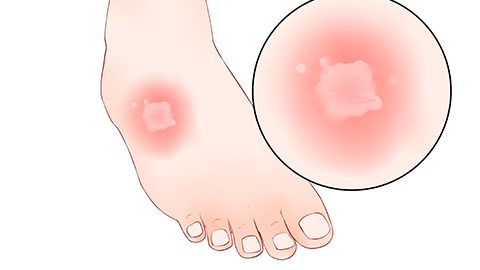What to do for a leg burn
For leg burns, immediately move away from the heat source, rinse with running cool water, properly manage blisters, use burn medications as directed by a doctor, and avoid pressure or friction on the wound. If the burn covers a large area, is deep, or accompanied by fever, seek medical attention immediately.

1. Immediately move away from the heat source: Once a leg burn occurs, quickly remove yourself from the high-temperature object or environment. Remove clothing soaked with hot water or oil promptly. If clothing adheres to the skin, do not forcibly peel it off to avoid worsening skin damage.
2. Rinse with running cool water: Place the burned leg under flowing cool water or apply continuous cold wet compresses for at least 15–20 minutes. The ideal water temperature is 15–20°C. Cooling helps reduce ongoing thermal damage to the skin and alleviates pain.
3. Properly manage blisters: If blisters form after the burn, small ones (less than 1 cm in diameter) should not be punctured and will typically resolve on their own. Large blisters or those prone to rupture should only be drained by healthcare professionals using sterile instruments to prevent infection caused by self-treatment.
4. Use burn medications as prescribed: After initial care, apply burn medications according to medical advice, such as silver sulfadiazine cream or moist burn ointment. Keep hands clean when applying medication, avoid rubbing the wound vigorously, and do not use antibiotics or other non-specific drugs without medical guidance.
5. Avoid pressure and friction on the wound: Keep the injured leg relaxed after the burn. Avoid wearing tight clothing and refrain from putting pressure on the burned area while sleeping. Minimize friction to prevent wound breakdown or infection and promote healing.
In daily care, keep the burned area clean and dry, change dressings and medications regularly, eat a diet rich in protein and vitamins, avoid spicy or irritating foods, monitor wound healing, and seek medical help promptly if signs of redness, swelling, or discharge appear.




